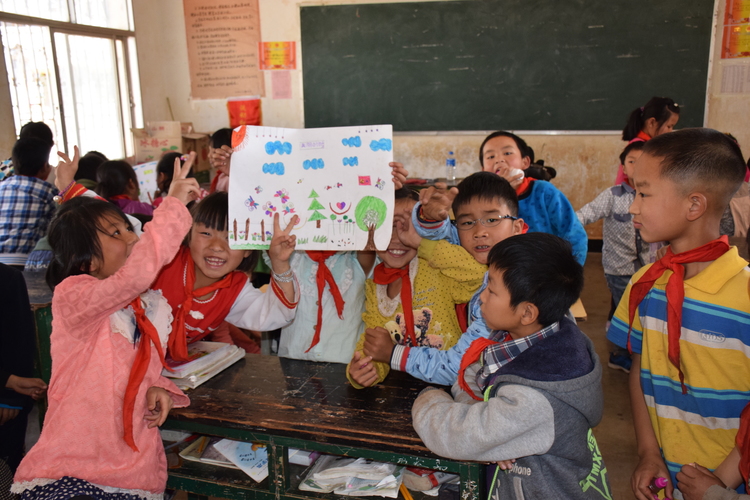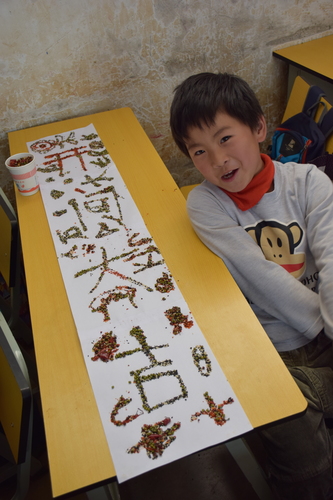fond memories of teach for china fellowship > 2015 Student Work Presentation
Sanyuejie (Ides of March) is a special holiday in the Dali Bai Minority Prefecture. First-grade Students drew their favorite part (going traveling with parents, climbing Jizu Mountain, etc) of this memorable time in groups and presented their drawings in class.
Second-grade students were first split into three groups, and then each group decided what they wanted to draw and how they intended to cooperate. After the completion of artworks, two members represented each group and stepped in front of the classroom to present on topics such as the theme and the use of colors.
People fondly call Yunnan "Caiyunzhinan," or "South of the Colorful Clouds." And it is no exaggeration that Yunnan is colorful--the local ingredients in Yunnan inspire me to offer my third-grade students the opportunity to make artworks using ingredients like red peppers, green beans, and sesame. Students, in groups of four or five, showcased lots of talent for both identifying colors and constructing objects .
Fourth-grade students are passionate artists. Not only do they understand the importance of drawing with a friend, they also successfully make their own sketch books and design a grid system to fit the theme of artistic creation.
Fifth-grade students are curious about everything. As I try to speed over two-point perspective during our mini art history lecture, they stop me and want to know more. Stunning indeed, their precocious understanding of perspective highlights how art education empowers curiosity, and much more.
Sixth-grade students are anxious to apply and keep art in the classroom. Although one art class period only lasts 45 minutes and that the next class requires a clean blackboard, they insist on decorating the board with "transient" artworks. This form of artistic elasticity, rendered by the fact that they are able to construct their artworks and subsequently let their works go after the class period, suggests their ability to adapt to situations and limitations.
Seventh-grade students are exposed to a few pithy conceptual artworks throughout the semester. After examining Sol LeWitt's conceptual foundations, they not only prove their understanding of LeWitt's rules by locating the first three lines but also transcend LeWitt's artwork by designing their own fourth line. In this sense, they build their unique conceptual quadrangles upon LeWitt's but then enclose the geometric form in their own ways.
Inspired by Joseph Kosuth, eighth-grade students intend to imitate and collaborate so that plentiful chairs can occupy the classroom. They each draw their own version of the "Three Chairs," and they want to create a visual presence of art in the classroom by attaching all the images to the blackboard. The outcome is beyond all expectations.










